Your Brain on Beauty: What Monet Taught Me About Art and the Mind
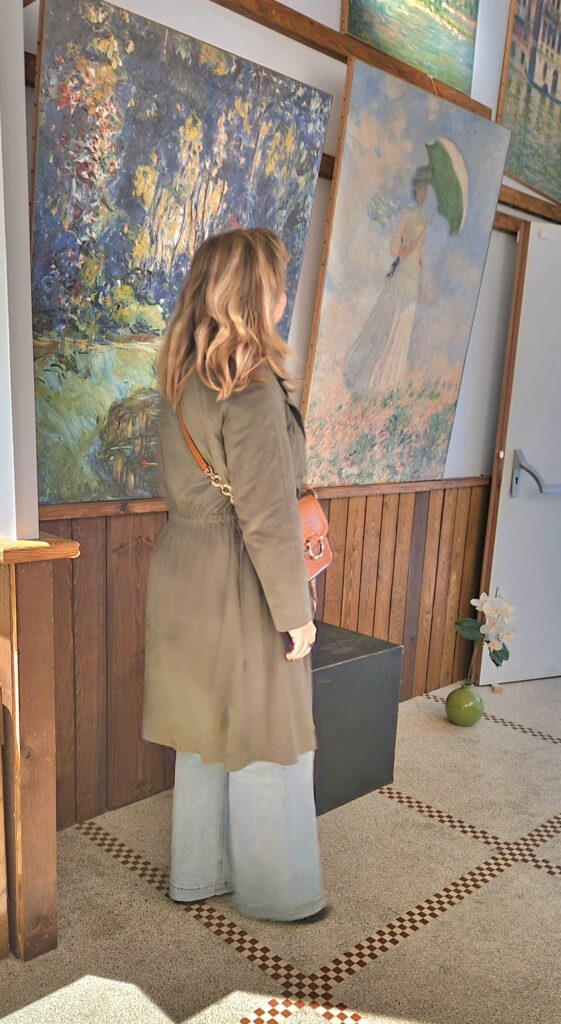
Stepping Inside a Painting
Last month, I stepped into a painting and I don’t mean that metaphorically. I found myself standing in a softly lit space in Antwerp, where Claude Monet’s brushstrokes bloomed across the walls, floor, and ceiling. Water lilies rippled around my feet. Flowers shimmered and dissolved in light. His garden at Giverny unfurled in luminous color, while classical music was playing, magnifying the depth of the experience.
For a moment, I forgot the world outside entirely.
I’ve always loved Monet’s work, the way he captures fleeting light, the softness of his forms, the almost meditative blur of color. But this immersive experience was different. It wasn’t just looking at a painting, it was like actually being in the painting. Moving through it. Being immersed and inspired by its magnificence.
It was enchanting to say the least and it moved me deeply.

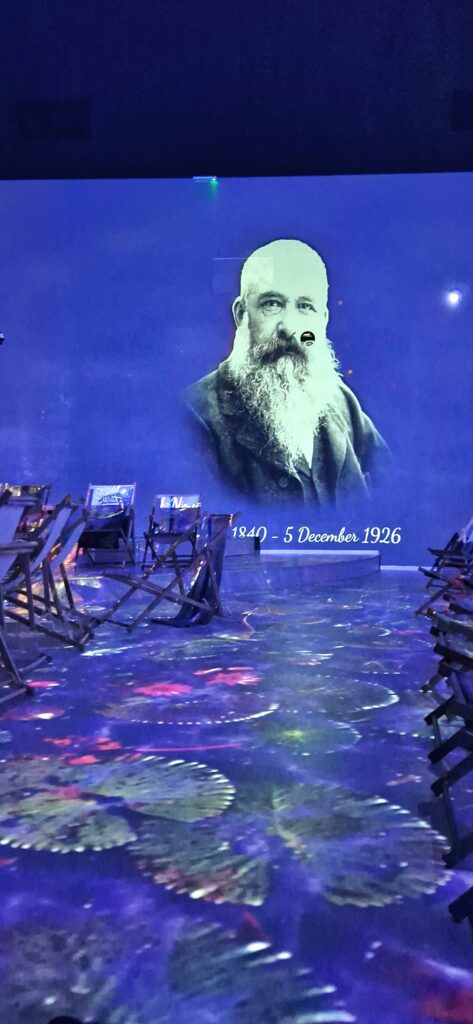
The Science of Why Beauty Moves Us
I think this is why the book Your Brain on Art lingered with me so long after I read it. Written by Ivy Ross and Susan Magsamen, it explores a field called neuroaesthetics. This is the study of how art and aesthetic experiences change our brains, our bodies, and our lives. The science confirms what many of us intuitively know: art isn’t just decoration. It’s nourishment.
When we engage with beauty – whether it’s a painting, a song, or even a beautifully set table – our brains light up in powerful, interconnected ways. Neural pathways associated with emotion, memory, empathy, and even physical healing come alive. It’s no wonder that as I stood surrounded by Monet’s work, I felt something loosen in my chest. A small ache that had been sitting quietly there, unnoticed, began to dissolve.
The book explains how even short periods of immersive artistic experience can lower cortisol (our stress hormone), increase dopamine (pleasure and reward), and support the brain’s ability to adapt and grow. It’s as though art reminds us of who we are, beneath the noise and restlessness.
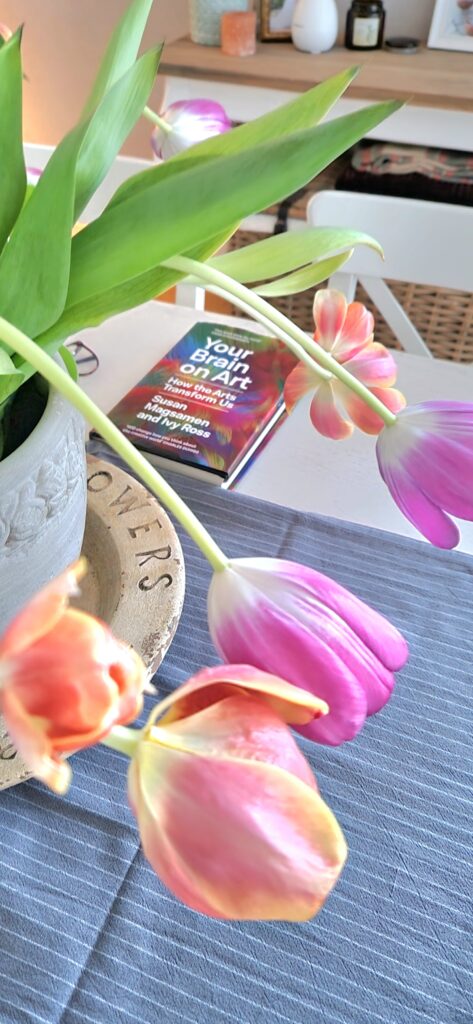

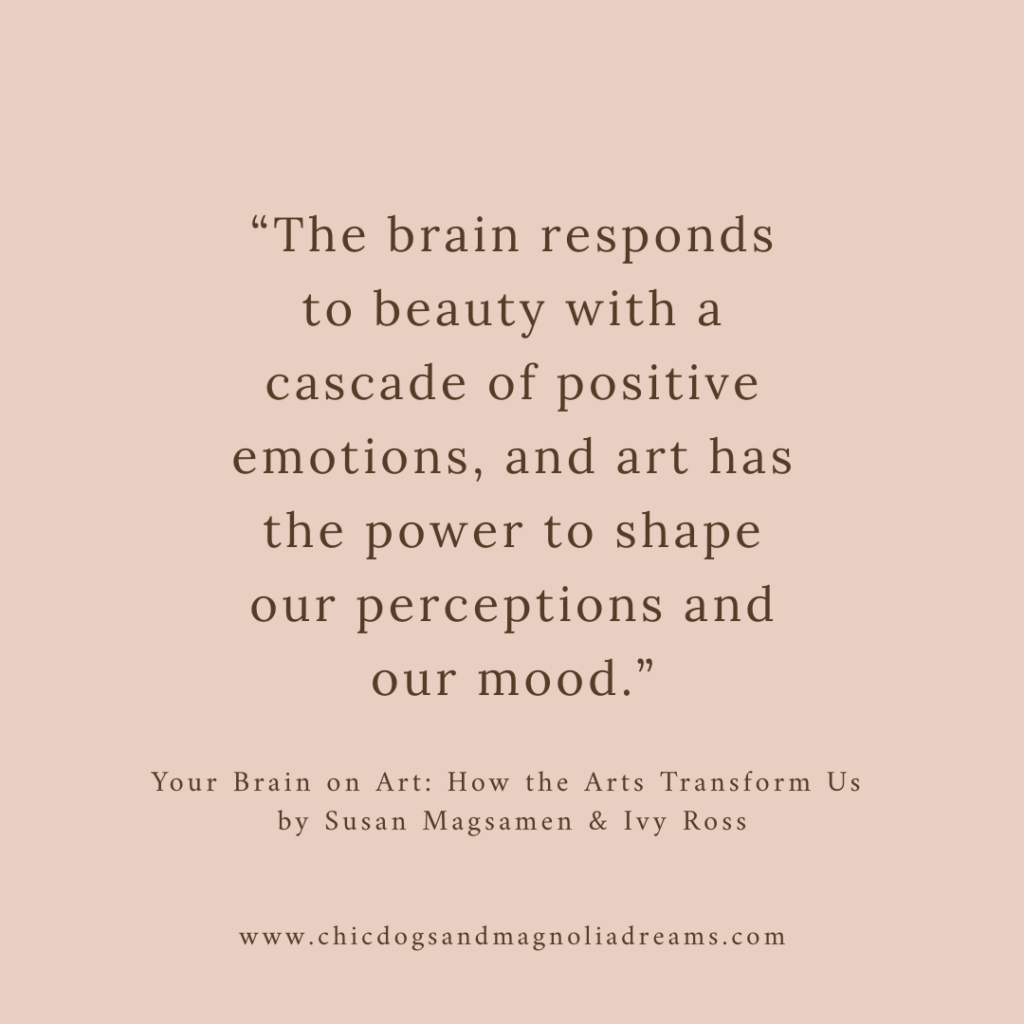
Beauty as a Quiet Rebellion
In that moment, I remembered something I’ve come to believe deeply: beauty is a quiet rebellion.
In a world that asks us to hurry, to numb, to scroll past wonder, choosing to sit with beauty is a kind of resistance. Allowing yourself to be moved by it, is powerful and almost revolutionary in this day and age. It’s not frivolous; it’s essential in creating an intentional life for ourselves. Especially for those of us who feel everything, who are moved by details, who long for depth and softness in daily life.
That morning with Monet reminded me of the kind of life I want to create: one that’s full of sensory nourishment, gentle awe, and space for slowing down.
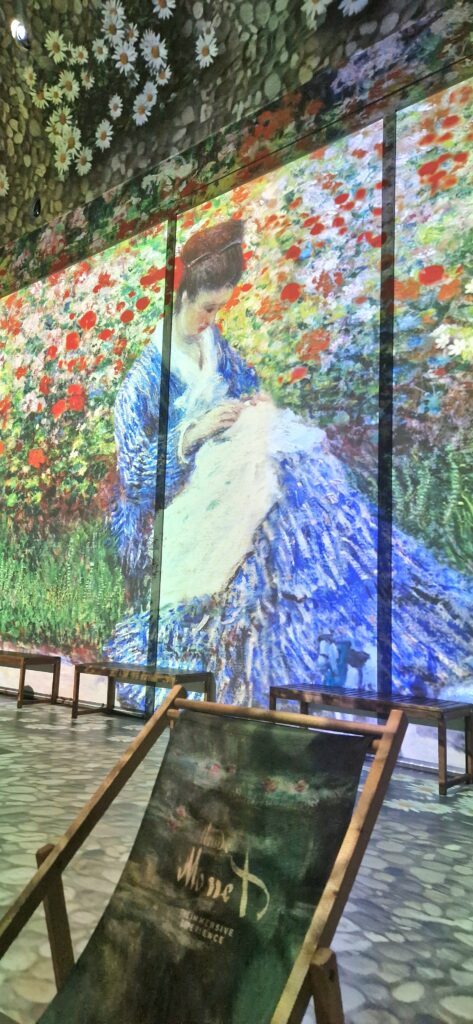


Letting Art Change You
If you ever get the chance to walk inside a painting – do not hesitate. And if you don’t, find a quiet moment to gaze at one. Or listen to music that makes your breath catch. Or sit in your garden and watch how the light delicately dances through the leaves.
Let it stir something in you.
Let it change your brain.
Let it bring you back to yourself.
Love,
Wendy
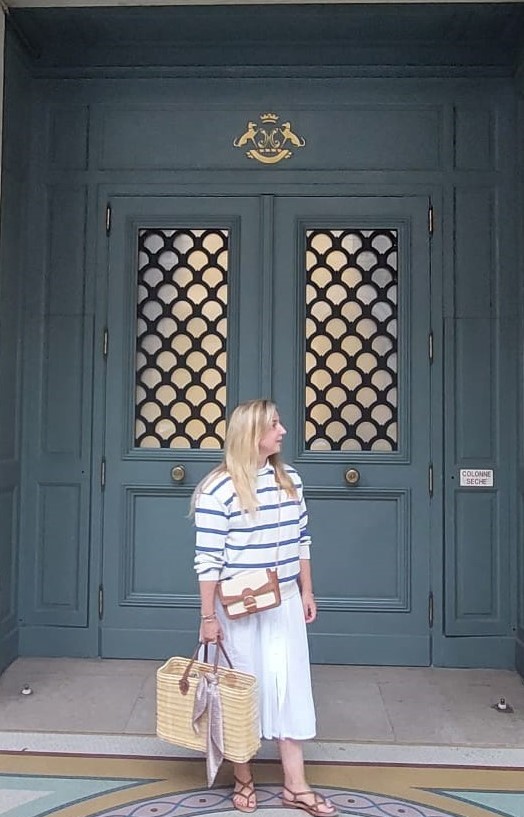
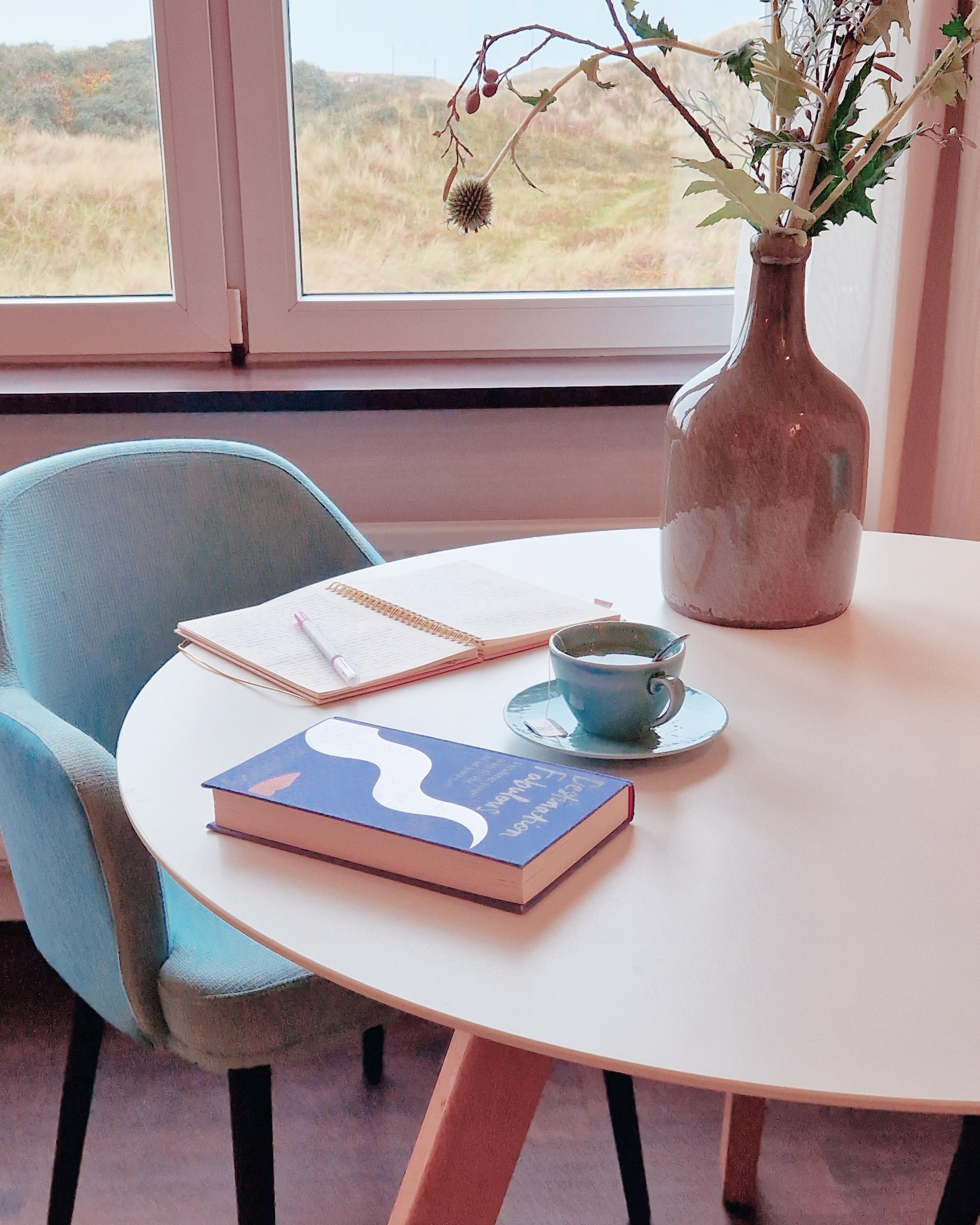
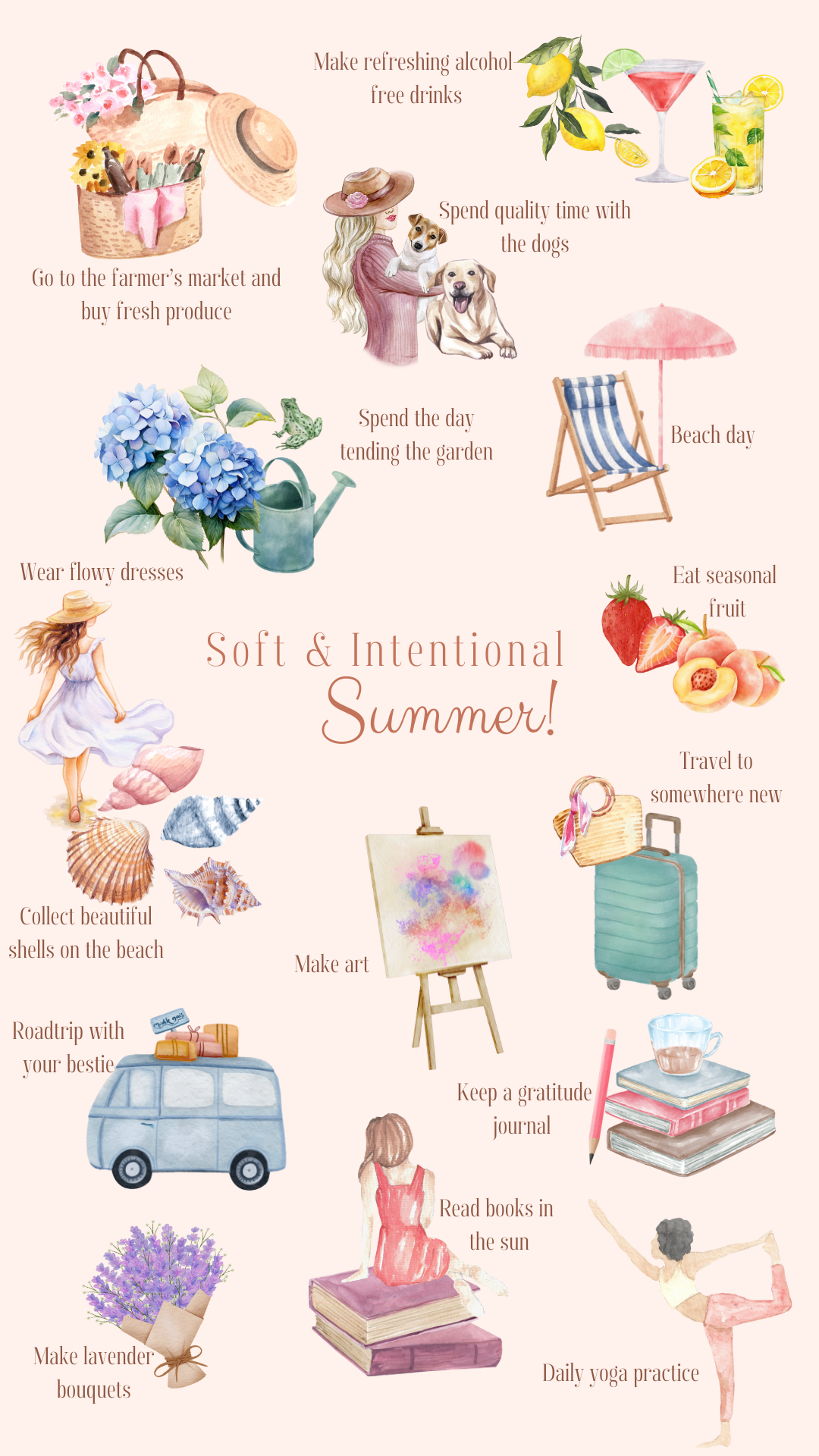
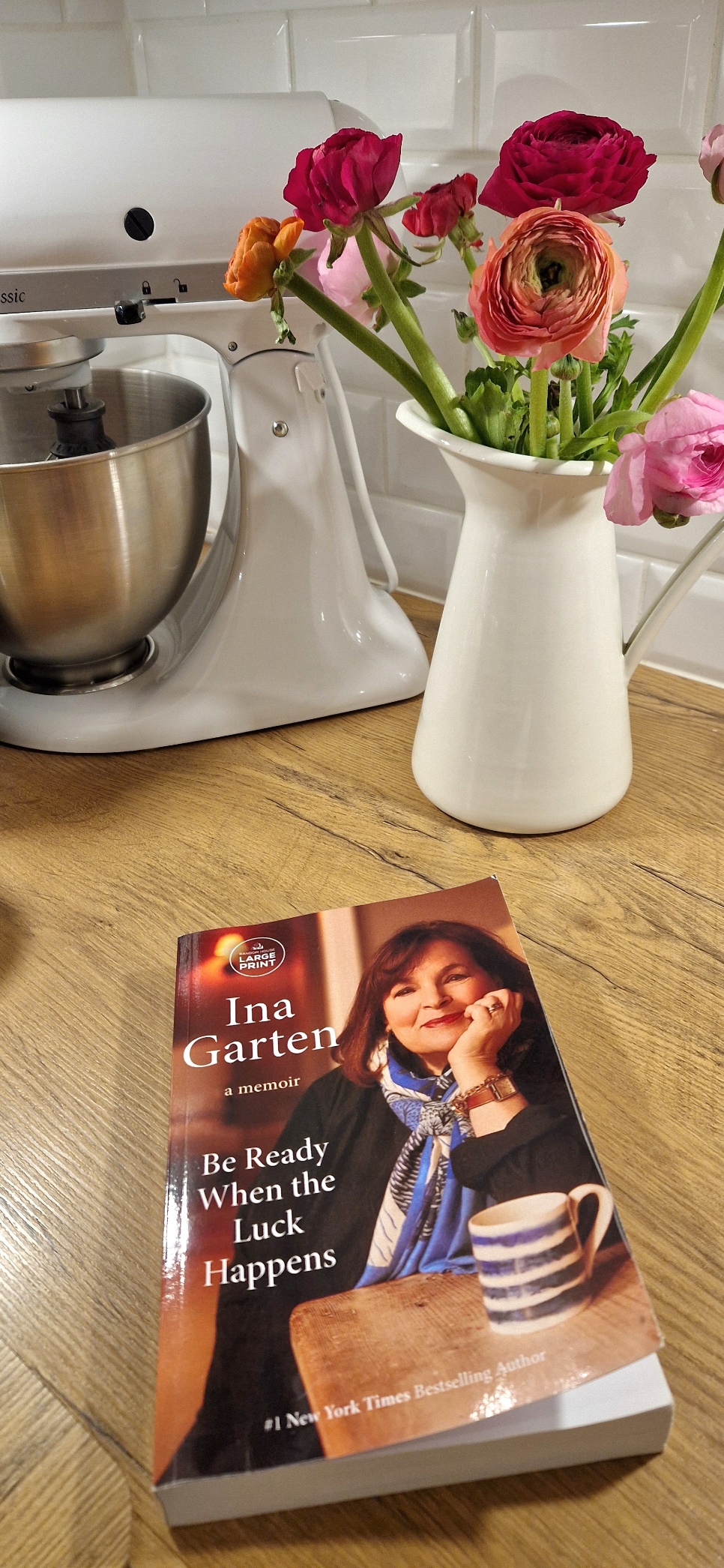
Leave a Reply